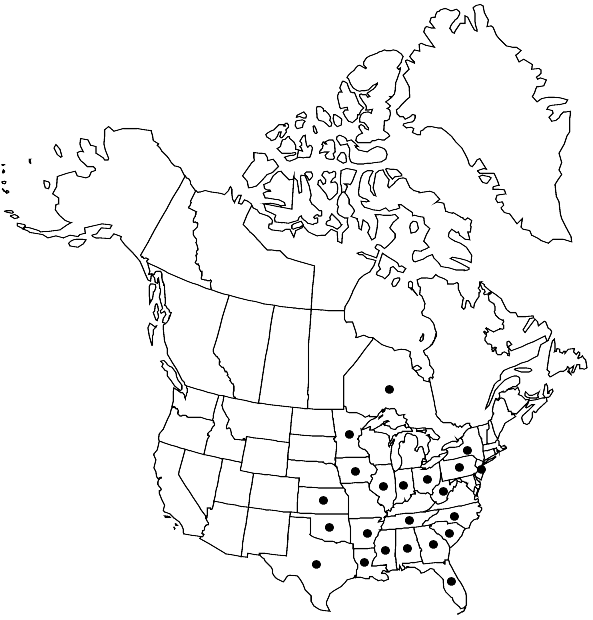Ephemerum crassinervium var. texanum
Bryologist 60: 73. 1957,.
Plants less than 2.2 mm. Leaves broadly lanceolate to oblong-lanceolate or ligulate and acuminate, often narrowed distally from slight to prominent shoulders, 0.8–2.4 × 0.17–0.27 mm; margins serrate distal to the proximal third, often with narrow shoulders bearing one or more teeth; apex acuminate, toothed, and densely papillose in the distal half; costa thin at base, percurrent or excurrent; areolation markedly dense distally; median laminal cells slightly papillose; distal laminal cells densely papillose. Capsule with few stomates, scattered throughout. Spores various, commonly subglobose, 68–120 × 50–80 µm, dark brown.
Phenology: Capsules mature year around, mostly in spring, autumn, and winter.
Habitat: Moist or drying soil, frequently in old fields, on roadsides, or in mixed forests
Elevation: low to moderate elevations (50-600 m)
Distribution

Ont., Ala., Ark., Fla., Ga., Ill., Ind., Iowa, Kans., La., Minn., Miss., N.J., N.Y., N.C., Ohio, Okla., Pa., S.C., Tenn., Tex., W.Va.
Discussion
Variety texanum is distinguishable largely by the dense papillosity of the distal half of the leaves. Secondarily, the lanceolate leaf shape, modified by more or less evident shoulders at the base of the acumen, confirms a determination.
Selected References
None.